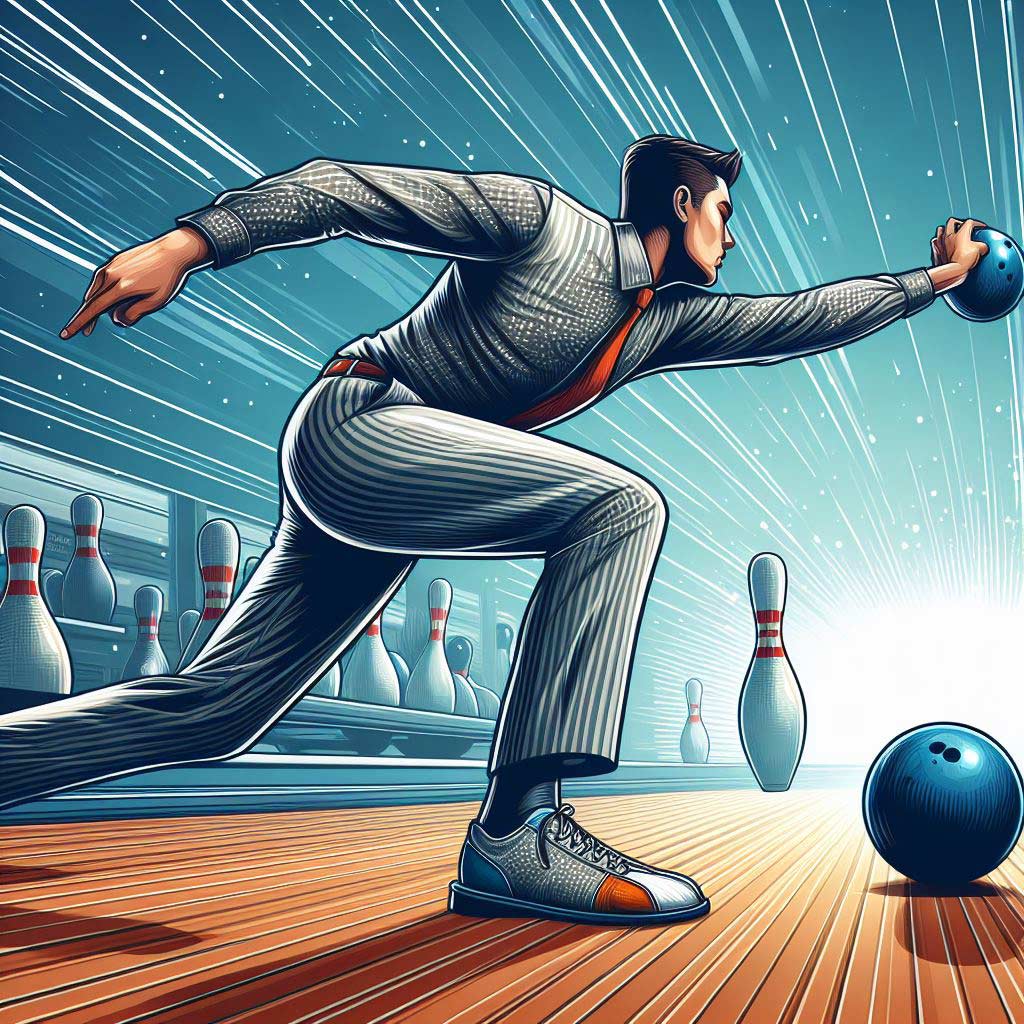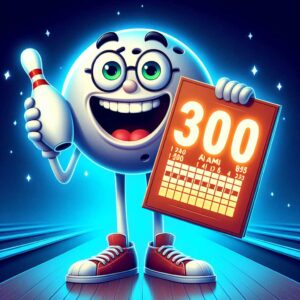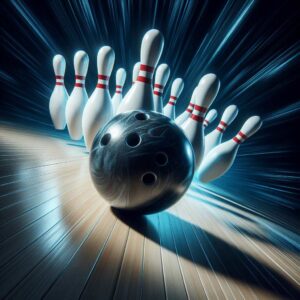Bowling is a sport that requires precision, power, and finesse. Those who have mastered the skills of bowling and want to take their game to the next level may have aspirations of becoming a professional bowler.
The professional bowling scene is thriving, with tournaments hosted across the country and broadcast internationally. Top bowlers can win millions in prize money during their careers.
However, the road to becoming a pro isn’t easy. It takes dedication, training, the right techniques, and experience bowling competitively at high levels.
This comprehensive guide will walk you through how to hone your bowling abilities and make the jump to professional status.
Learn the Fundamentals
The first key step is establishing proper bowling fundamentals. Even naturally talented bowlers need to learn the right grip, stance, footwork, release, and follow-through.
It’s crucial to develop sound mechanics early on before bad habits set in. Professional coaching or classes can quickly build this foundation before you start practicing on your own. Here are some fundamentals every pro works tirelessly to perfect:
Proper Bowling Ball Grip
Using the correct grip maximizes your control and accuracy. You should use a four or five-step approach holding the ball with your non-dominant hand.
Place your thumb in the thumb hole and your other fingers in the gripping holes up to the second knuckle. The ball should be balanced and feel secure without dropping. Keep a firm, but relaxed grip without squeezing. Consistency in your grip is vital.
Effective Stance
Your starting stance sets up your approach. Stand with your hips and shoulders square to the foul line and knees slightly bent. Position your non-dominant foot on the inside of the lane for stability.
Keep your dominant foot slightly back. Weight should be even on both feet, with knees over your toes. Remain balanced and relaxed in your stance before stepping forward.
Precision Footwork
Smooth, well-timed footwork transfers power to the swing. During a four-step approach, start with your non-dominant foot and finish with the dominant foot.
Keep the slide foot pointed straight and take smaller steps with it. Push off with power at each step, transferring weight fully between feet. Keep shoulders square and don’t rush. Find an optimal speed that synchronizes the approach and swing.
Effective Release
This is the most intricate part of the throw. As you release, your palm should rotate from facing the ceiling to facing the floor.
This applies roll with forward rotation, creating the optimal skid and hook needed to strike consistently. Stay behind the ball, keeping your arm straight past the release point. The wrist and fingers supply power at release, not the arm or shoulder.
Proper Follow Through
Following through is critical for accuracy. Keep your swing arm extended up toward your target with your palm rotated outward after release.
Allow momentum to continue your body forward with a slide, bending your dominant knee. Remain balanced, resist the temptation to quickly turn and watch the ball. Extending the follow-through increases revolutions.
Choosing the Right Ball
Having the right bowling ball is crucial. Talk to experienced bowlers at your local alley or pro shop to get recommendations on equipment. Heavier balls around 15 pounds generate momentum and power.
Urethane balls offer control on oily lanes. Reactive resin balls grip the lane for more hook potential. Matching your release style, speed, and lane conditions to the ball will optimize strike percentage. Professional bowlers have an arsenal of balls for different scenarios.
Understanding Lane Oil Patterns
Bowling alleys apply oil to lanes in specific patterns to challenge bowlers. Understanding these patterns is key to professional bowling success. The oil makes the ball slide before it hooks into the pocket. Common patterns include:
- House Shot – Most forgiving, with oil only in the middle 15-20 feet. Easier to play straight or outside the line.
- Sport Shot – Oil across 40 feet with less room for error. Angling across oil is necessary.
- PBA Shot – Toughest oil patterns for pros. Extreme angles into pockets are required.
Study the patterns you bowl on most frequently. Visualize the oil. Adjust speed, angles, and equipment to match the conditions. Advanced bowlers purposely play different lines for versatility.
Improve Your Skills
Top professional bowlers practice for hours daily to hone their skills. Work on the following areas in your training to keep advancing:
Spare Shooting
Being a great spare shooter separates the pros. Throw straight, angled, and curved shots to hit single pins, corners, sides, and splits.
Use plastic balls and focus your release. Turn 10-pin spares into strikes. Consistency in converting spares greatly increases the average.
Adjusting Speed
Vary ball speed based on lane conditions. Slower on fresh oil, faster as lanes break down. Match speed to ball choice and swing tempo. Generate ball momentum at release, don’t muscle it. Time the approach and swing to optimize speed.
Optimizing Footwork
Smooth, synchronized footwork creates power and consistency. Find the right number of steps for your frame.
Work on slide foot landing and release timing. Keep slide foot pointed down the lane. Push off aggressively with trail foot. Eliminate extra steps or hesitations.
Improving Release
Work with coaches on matching your release to your ball’s core dynamics. Apply lift and rotation for a controlled, rev-generating release. Maximize finger and wrist strength and dexterity. Use visual aids to monitor and adjust release for accuracy.
Physical Strength and Conditioning
Bowling for hours requires strength, stamina, and fitness. Work on:
- Core strength – For powerful controlled swings and slides.
- Cardiovascular endurance – Bowling several events daily requires conditioning.
- Leg power – Strong legs enable forceful slides and approaches.
- Balance and posture – Remaining balanced during release and follow-through is vital.
- Flexibility – Limber muscles help transfer force and avoid injury.
- Functional training – Core motions mimicking actual bowling motions.
Proper nutrition also keeps energy levels and focus high during long tournaments. Bowling fitness reduces fatigue and the risk of muscle strain or injury.
Join a League
Joining a certified bowling league provides structured competition to build experience. Look for scratch leagues for serious competitors.
Get teammates and practice working together. Learn about bowling formats, scoring, and courtesy. League nights prepare you for tournament atmospheres.
Gain exposure to different lane conditions and adjusting strategies. Most pros hone their skills for years in league play before going pro.
Enter Local Tournaments
Entering local and regional bowling tournaments is the next step in gaining professional experience before attempting national tours.
Check tournament calendars for upcoming events in your state or region. Tournaments feature multiple events like singles, doubles, team, and masters events over several days.
Get accustomed to the pressure of performing in tournaments. Manage nerves, analyze the oil, and adjust your game as conditions change. The top amateurs at tournaments likely have their sights set on going pro as well.
Consider Lessons
Even professionals work with coaches to refine techniques and get an outside perspective on their game. Lessons use video analysis and biomechanical breakdowns to help strengthen your bowling skills.
Coaches identify areas for improvement and provide specific drills. They also give guidance on optimal bowling equipment, lane play, and preparing mentally. Private or group lessons can take your skills to new levels rapidly.
Purchase Performance Equipment
Investing in high-end equipment designed for professionals and serious competitors can elevate your game. Performance bowling balls tailored to your style and release help optimize strikes and spares.
Look for balls made in limited quantities not in most pro shops. Other equipment like specialized shoes, rosin bags, towels, and inserts also give you an edge.
Ultimately, you need to be comfortable and confident in your arsenal. Study what the top pros use and get fitted properly.
Develop a Unique Style
The best professionals have developed unique styles and techniques that set themselves apart from other players.
Be open to experimenting with different footwork patterns, athletic stances, timing mechanics, unorthodox grips, delivery angles, and targeting.
Finding innovative methods that sync with your physical abilities can make you stand out. Be aware of conventional techniques, but don’t be afraid to break the mold if it benefits your consistency and accuracy.
Study the Pros
Follow professional bowling tours online or on television. Study the techniques, strategies, equipment, and mental approaches used by the best players in the world.
Break down their mechanics. Read interviews for tips directly from pros on elevating your game. Watching tournaments gives exposure to complicated lane conditions and how the legends make adjustments.
Learn about their training regimens and competitive mindsets. Gain knowledge from those already at the top level you aspire to reach.
Earn a Spot on the PBA
Tour The Professional Bowlers Association (PBA) oversees the major professional bowling tours, events, and championships globally.
The PBA Tour is the pinnacle, featuring over 20 events annually with the world’s best bowlers. Earning a PBA Tour exemption is the ultimate goal, but the path starts with PBA Regional competitions.
Top performers at local and regional events can qualify for PBA Tour trials or earn exemptions for select PBA events.
It takes years of sustained excellence and up to $400,000 in lifetime PBA earnings to get near full PBA Tour status. Once on tour, consistently placing in events earns exemptions into future tournaments.
Maintaining a Professional Mindset
Reaching bowling’s professional ranks takes more than just physical skills. Champion bowlers succeed through positive mindsets, mental toughness, focus, and composure under pressure. Mastering the mental game is just as important as technique.
Consistency
Strive for consistency in your performances. Minimize open frames. Make your “bad” games still respectable scores. Match practice and league consistency before entering tournaments.
Handling Pressure
Get comfortable bowling in high-stakes environments. Use pre-shot routines to quiet your mind. Channel nerves into positive energy and intensity. Stay focused on the process and present.
Embracing Competition
Welcome competitive challenges rather than avoid them. Go up against better bowlers whenever possible. Use losses as motivation. Analyze defeats rationally. Remain committed to elevating your skills through competition.
Confidence
Believe in your abilities and preparation. Visualize succeeding. Focus on your strengths. Learn from setbacks quickly. Maintain confidence even after poor performances.
Concentration
Keep focused on executing each shot. Don’t dwell on previous shots. Eliminate distractions and negative thinking. Maintain mental intensity and block out external factors.
Conclusion
Becoming a professional bowler requires natural ability combined with a relentless work ethic.
Follow these steps to hone fundamental skills, gain competitive experience, optimize techniques, build fitness, and adopt a champion mindset.
With focused, strategic training plans and committing to smart progression from amateur competitions to professional tours, those passionate about bowling can realize their dreams of becoming a pro.
All the preparation leads up to competing against the best in exciting televised events. Remember, embrace the journey to maximize your potential in the sport. Stay determined and continue striving for excellence.
Frequently Asked Questions
How much money can a bowler make?
- Top professional bowlers can make over $100,000 per year in prize money, with some earning millions over a career. Additional income comes from endorsements and sponsorships. The very elite on the PBA Tour may earn $300,000-$500,000 annually when tournament wins and bonuses are factored in.
Can I be a professional bowler?
- Yes, with proper training, lots of practice, and competitive experience, many skilled bowlers can achieve professional status. Natural talent helps, but the right work ethic and persistence are key. Amateurs should join leagues, enter tournaments, take lessons, and hone skills over time to reach a pro level.
How many professional bowlers are there in the world?
- There are several thousand active professional bowlers worldwide across various tours and leagues. In the United States, around 300-350 bowlers have full exempt status on the PBA Tour. There are over 5,000 members in the PBA organization. Other countries like Japan, South Korea, Europe, and Australia also have large professional bowling scenes.
Can you go pro in bowling?
- Going pro in bowling involves years of competitive amateur experience and success to qualify for professional tours and events. Excelling at regional tournaments and possibly joining intense training programs can earn invitations and exemptions into select pro competitions. Ultimately, bowlers have to prove themselves against top talent.
Can you make a living bowling?
- It is possible to make a full-time living bowling, but very challenging. Only the top tournament pros and bowlers with lucrative sponsorship deals earn enough in competitive winnings. Other bowlers supplement tournament income with earnings from bowling instruction, running pro shops, managing bowling centers, and other bowling-related business ventures.
Can you make a living off of bowling?
- Making a comfortable living solely off of bowling winnings is extremely difficult and risky. However, the best PBA stars can earn multi-million dollars over a career from tournament prizes and bonuses. Savvy professional bowlers expand their income through instructional camps, endorsements, broadcasting, sponsorships, public appearances, and branded merchandise.
Do pro bowlers pay for balls?
- Pro and elite amateur bowlers often have ball endorsements, so manufacturers provide equipment for free or reduced costs. However, most still have to pay for balls early in their careers before securing bowling ball endorsements. Name recognition and performance dictate endorsement deals.
Do you have to be tall to be a bowler?
- Height and size offer no major advantages in bowling. Shorter players can generate power and revolutions effectively. Pro bowling champions have come in all shapes and sizes. Proper mechanics and form are much more important than height.
Are there still professional bowlers?
- Yes, professional and competitive bowling is still thriving today. The Professional Bowlers Association (PBA) Tour hosts over 20 tournaments annually across the United States. There are also pro events in Europe, Asia, Australia, and other countries. Bowling remains one of the highest participation sports worldwide.





